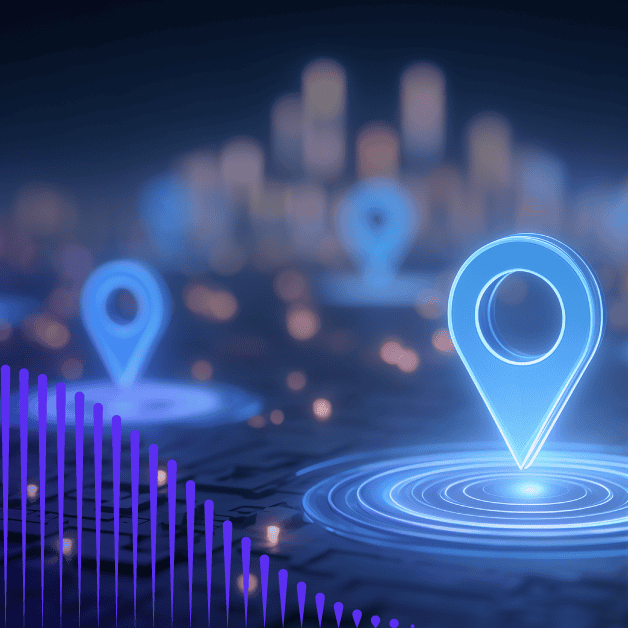Imagine you see a local Starbucks ad promoting a new beverage.
The featured drink looks good, but your eye is immediately drawn to something else. The Starbucks logo is… orange?
Naturally, you’re confused at the sight of this off-brand logo, and even skeptical that the promotion is fake.
Unfortunately, it’s all too common for local affiliates to launch off-brand campaigns like these when they don’t have easy access to on-brand assets.
That’s where brand asset management comes in.
This process is crucial for ensuring every local campaign accurately represents your brand.
Learn everything you need to know about brand asset management, including what it entails, best practices, and what to look for in a brand management platform.
What are brand assets?
Brand assets are the visual and non-visual elements that represent a brand, including everything from imagery to messaging. Together, these components project the look, feel, and personality of a brand, shaping consumers’ perceptions of the company and improving overall recognition. Brand assets also differentiate brands from their competition and can even cultivate trust.
Brand assets come in a wide array of formats, such as:
- Logos
- Colors
- Photos
- Typography and fonts
- Icons
- Graphics
- Brand voice
- Tone
- Taglines and slogans
- Mascots
McDonald’s is an example of a brand with highly recognizable brand assets. Any time you see the golden arches, red and yellow color palette, picture-perfect Big Mac photography, or the “I’m lovin’ it” slogan, you know exactly what you’re looking at. And chances are, those brand elements evoke some sort of positive reaction when you spot them — whether happiness, nostalgia, or warmth. That’s why McDonald’s makes a great case for the impact brand assets can have.

What is brand asset management?
Brand asset management is the process of centralizing, updating, and distributing brand assets to partners to ensure all marketing is current and compliant. It’s all about keeping assets organized and easily accessible while verifying that all materials are on-brand and in their most up-to-date versions. As a result, partners can efficiently run high-quality promotions that represent your brand accurately and consistently.
Without brand asset management, you risk partners struggling to locate materials and using outdated or noncompliant assets in local campaigns.
Benefits of brand asset management
When you practice effective brand asset management across your partner ecosystem, you’ll experience the following advantages for your brand:
- Ensuring brand compliance: Asset management ensures that all partner marketing is current, accurate, and on-brand.
- Creating a consistent image: When you provide branded assets across your partner network, you ensure that your brand image is being represented the same way everywhere it’s being promoted.
- Boosting brand recognition: With consistent and unified asset use comes greater brand recognition amongst consumers.
- Driving partner efficiency: Storing all brand assets in a centralized location is a major time-saver, ensuring partners don’t have to spend time visiting numerous locations to find the materials they need.
- Minimizing corporate intervention: The easier it is for your partners to locate and access marketing assets, the less they’ll come to you asking for help. It’s a win-win!
Want to see how brand asset management streamlines results for real companies? Learn how a major insurance company achieved next-level platform adoption, minimized support requests, and boosted customer satisfaction by centralizing marketing assets.
What to look for in a brand asset management platform
Brand asset management isn’t possible without robust technology to execute it. That’s where brand asset management systems come in. This is the software brands use to store, organize, and share their branded assets. Think of it as a digital filing cabinet.
When selecting brand asset management software for your partner ecosystem, it’s vital that this technology possesses the following features:
- Access controls: Your platform should give you the ability to limit who can view, upload, download, and edit assets to ensure complete asset protection. With access controls, you prevent materials from being accidentally altered or deleted, or even falling into the wrong hands.
- Asset tagging: Adding tags and metadata to your asset library makes it faster and easier for you and your partners to find what you need, allowing you to search by campaign, asset type, and more.
- Customizable templates: Your brand asset management software should allow you to build and implement brand-approved templates that partners can easily customize to their individual locations.
- Bulk uploads: Make asset transfers a breeze with a platform that allows for bulk uploads.
- Version control: Asset management platforms should reliably track each version of your assets, ensuring partners can only access the most up-to-date assets while making it easy for your brand to recover previous versions when necessary.
- Analytics and reporting: See which assets are being used and which partners are using them with a platform that provides real-time data and insights.
- Integration capabilities: Integrate your brand asset management systems with other tools in your tech stack to streamline workflows.
Not sure what these platform features look like? Check out screenshots from Ansira’s brand asset management software below.
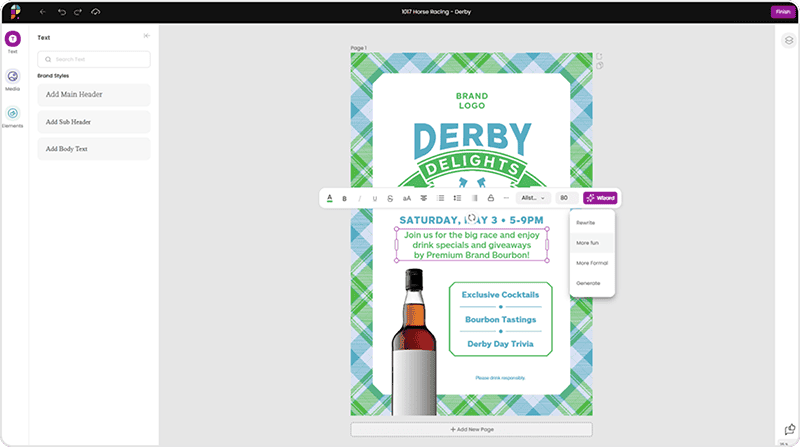
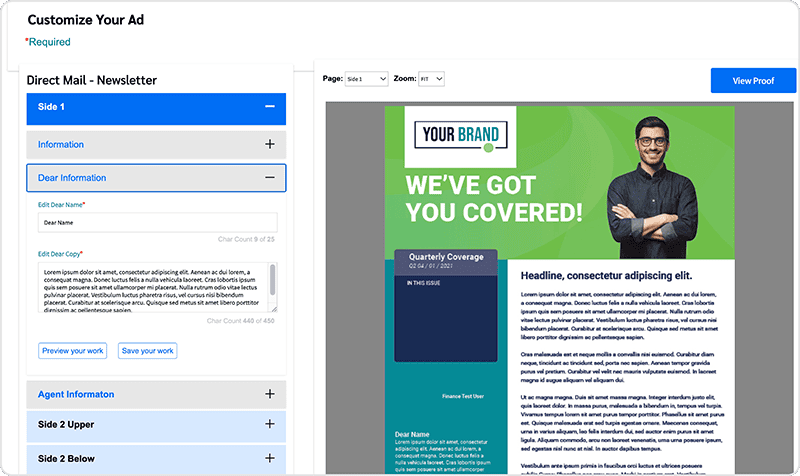
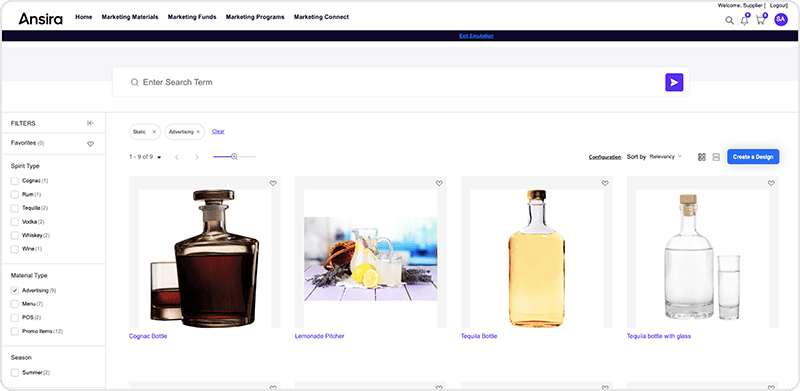
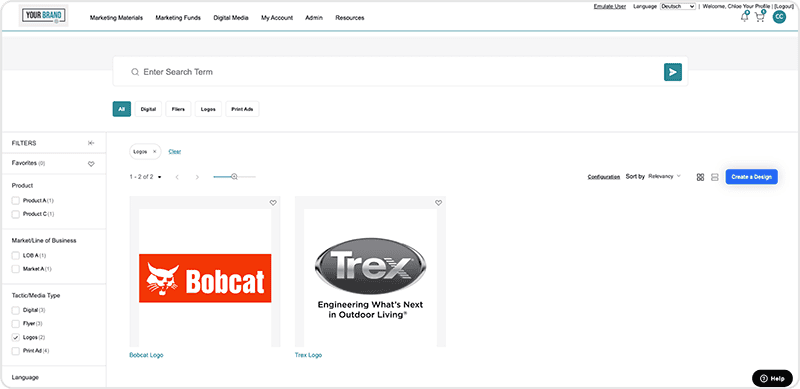
Brand asset management best practices
Managing branded assets across your partner network can be complicated — but when you take the right measures, you can ensure every asset is handled effectively.
1. Audit your assets
It may seem tempting, but you shouldn’t start dumping assets into your brand asset management platform the second you get it up and running. Instead, evaluate all your existing assets to determine if any are outdated or duplicative. Once you audit your entire asset library, you’ll be left with a collection of high-quality, up-to-date assets that align with your brand image.
Want to go the extra mile? Conduct a gap analysis to determine if there are any asset types you’re missing, then get to work on building and adding them to your platform.
2. Establish brand guidelines
Marketing isn’t always as intuitive for your partners as it is for you. That’s why you should establish clear brand guidelines detailing how to leverage assets properly and when to use them. This includes instructions on correctly adjusting colors, implementing messaging, and positioning images. You’ll also need to establish a process for design approvals to ensure all new assets are thoroughly evaluated and approved before being used in marketing.
When you leverage a streamlined design tool with compliance guidelines built in, you can empower partners to artfully customize assets in seconds while minimizing intervention on your part.
3. Organize assets
If you have dozens or even hundreds of branded assets available to partners, they may struggle to sift through everything to find what they’re looking for. That’s why you should consider assigning tags and metadata to each asset to improve searchability. By creating a clear taxonomy, partners will be able to easily locate the assets they need using filters, categories, and folders.
4. Set roles and permissions
It goes without saying that not everyone should have the ability to view, download, edit, or approve assets. Be sure to build user roles and permissions within your brand asset management system to grant access to partners and teams accordingly.
For example, your partners should be able to download new assets, but they shouldn’t have the option of accessing archived ones — that function should be reserved for your corporate team.
5. Assess asset usage
Once your brand asset management platform has been implemented, your work isn’t done yet. You should continuously monitor asset usage to see which assets are being used by which partners and how those assets are performing. By analyzing these metrics, you’ll be able to gain valuable insights into what’s making an impact and what should be reevaluated and optimized for better results.
Common pitfalls and how to avoid them
There are a few obstacles you should be aware of when planning your brand asset management strategy. By getting ahead of these challenges now, you can better set up your partners for success.
Here are the most common asset management pitfalls and how to avoid them:
- Complicated folder structures: If your asset folder naming conventions are vague or confusing, or you’re leveraging too many folders at once, your partners might struggle to locate what they need. Be sure to minimize the number of folders you use and name them concisely to eliminate confusion.
- Lack of user training and adoption: If you don’t educate your partners on how to leverage your technology, they’ll likely get hung up trying to navigate your platform, leading to low adoption. Consider providing training sessions or videos to familiarize your partners with your brand asset management software.
- Failure to update assets regularly: Without regular asset updates, you risk partners getting a hold of outdated materials that won’t reflect well on your brand. Make sure to frequently evaluate and update your assets to ensure the most current elements are available.
- Not leveraging analytics: Brands that don’t review asset performance metrics miss out on major opportunities to optimize and improve their materials. Leverage regular reporting so you can make data-driven decisions moving forward.
The future of brand asset management
AI will make its way into asset management, eventually giving brands the ability to automate asset tagging. That means instead of manually tagging every asset within your library, AI will be able to use machine learning to assess the context of each asset and assign relevant metadata automatically. This AI-powered tagging will reduce human error while saving time and reducing manual effort.
AI will also be able to aid in the asset retrieval process. Rather than manually searching for assets, AI-driven search will enable partners to locate assets using natural language queries and image recognition.
Simplify brand asset management with a proven platform
For your brand, asset management may be the difference between high-quality local campaigns and noncompliant marketing materials. When you centralize and manage your brand assets wisely, you ensure accurate and consistent brand representation while simplifying marketing processes for partners.
Ansira’s brand asset management platform, Ansira Create, is proven to streamline the asset design, approval, and distribution processes to facilitate a seamless experience for brands and their partner ecosystems. Get in touch with one of our experts to learn more.




